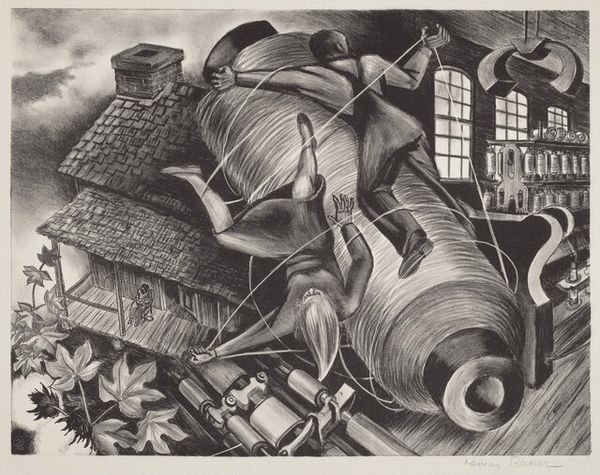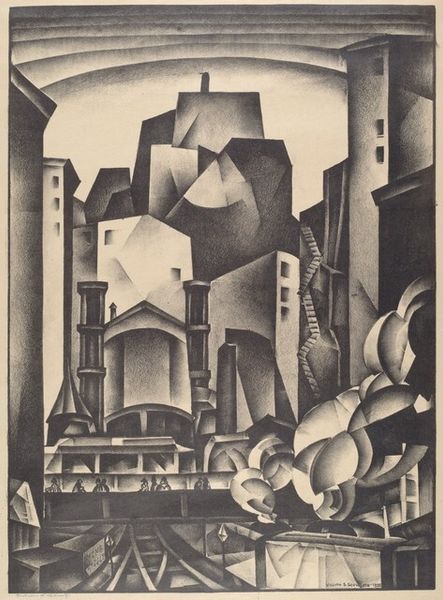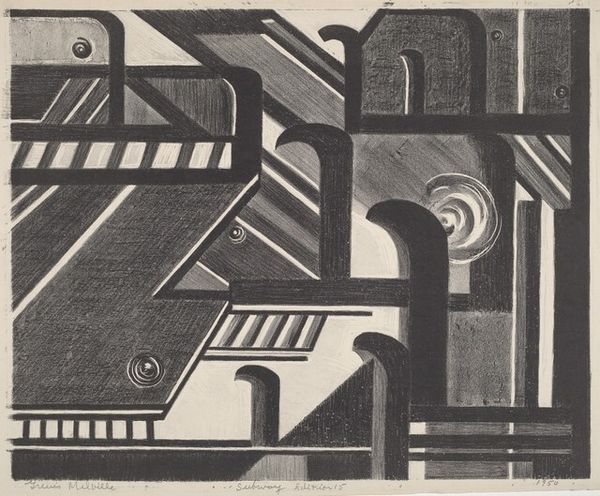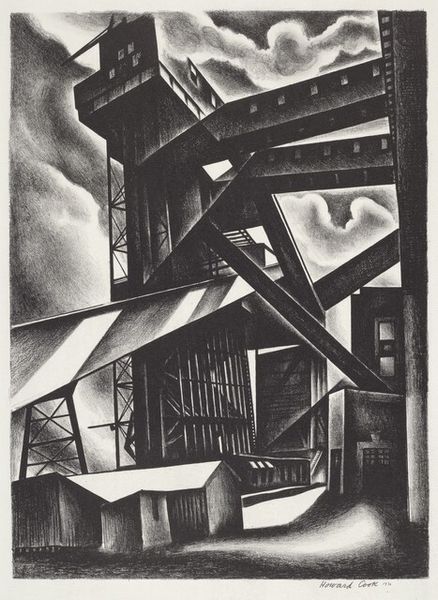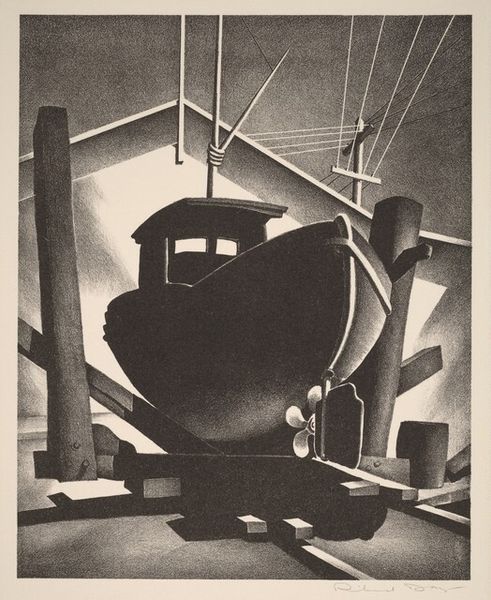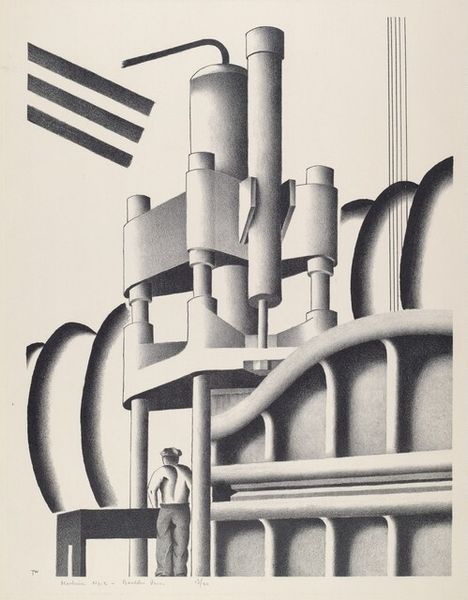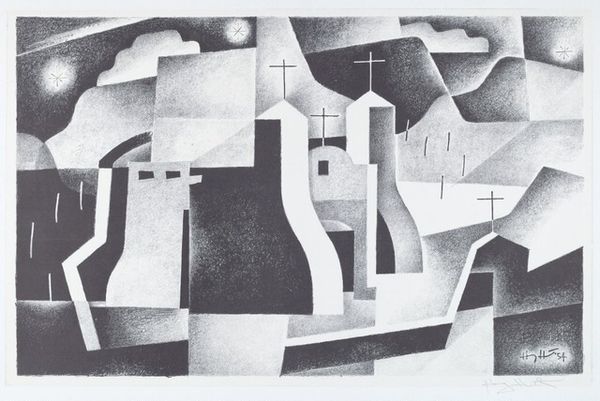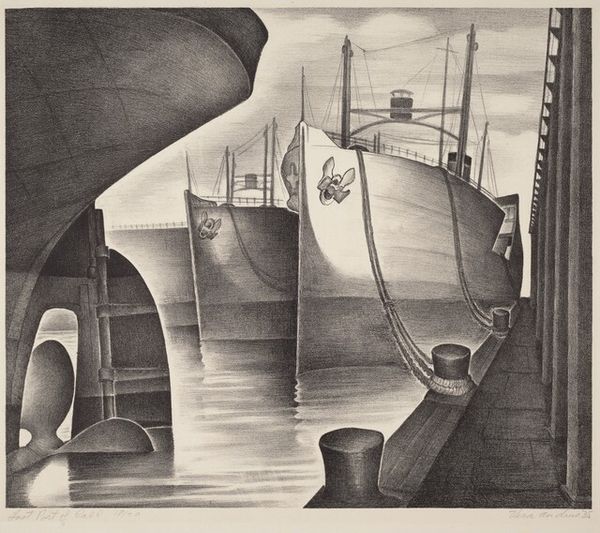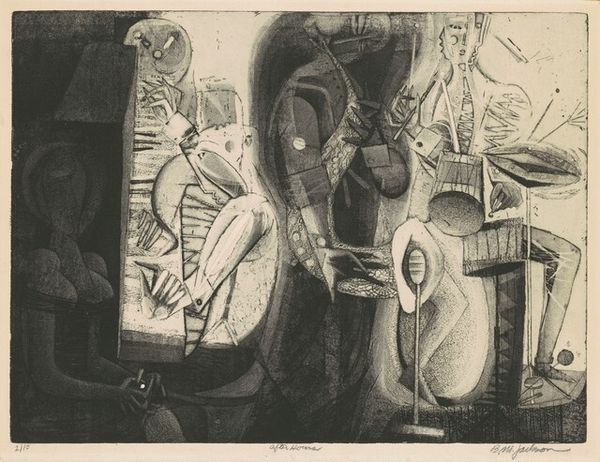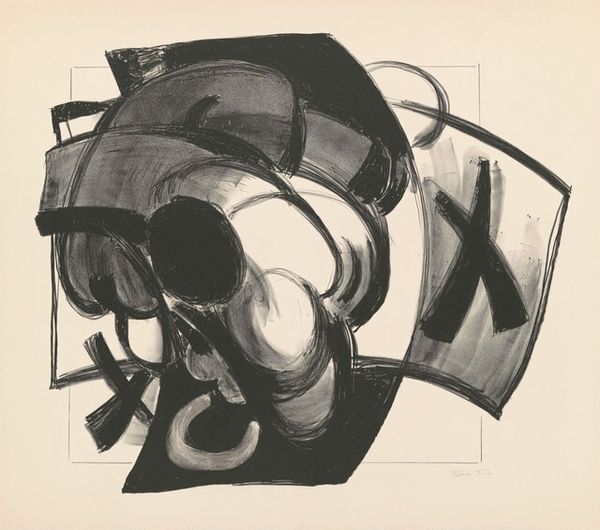
# print
#
caricature
#
geometric
#
line
#
modernism
Dimensions: image: 30.5 x 25.4 cm (12 x 10 in.) sheet: 39.4 x 34.3 cm (15 1/2 x 13 1/2 in.)
Copyright: National Gallery of Art: CC0 1.0
Editor: This is "Engine Room," a print made by Howard Cook in 1930. There's a striking sense of industrial power here. It’s almost overwhelming with its geometric forms. What visual metaphors do you see at play? Curator: The engine room itself functions as a potent symbol. In the collective psyche of the 1930s, the machine room embodied progress, power, and modernity – all charged concepts, weren't they? Cook isn't merely depicting a space; he's presenting a cultural icon. What feelings do these massive forms evoke in you? Editor: Awe, but also a little anxiety. It feels like a system too big for any one person to control. Curator: Precisely! Think about the symbolic language of size. Immense scale often suggests something beyond human comprehension or control. It plays on our innate responses to power, danger, and perhaps even a sense of insignificance. This engine room reminds me of something from Metropolis. Do you pick up on any tension between the cold geometry of the machines and any sign of human presence? Editor: Now that you mention it, there’s a sense of absence. All that powerful machinery, but no people in sight. Curator: And what does that absence signify? Is it about alienation, efficiency, or something else entirely? Consider also the composition - the close-up view, the hard lines… Editor: I see the symbolism much more clearly now! It's a fascinating lens through which to view that era's perception of industrial advancement. Curator: Indeed. Howard Cook offers us a symbolic landscape of modernity, prompting questions about its promises and potential perils.
Comments
No comments
Be the first to comment and join the conversation on the ultimate creative platform.
